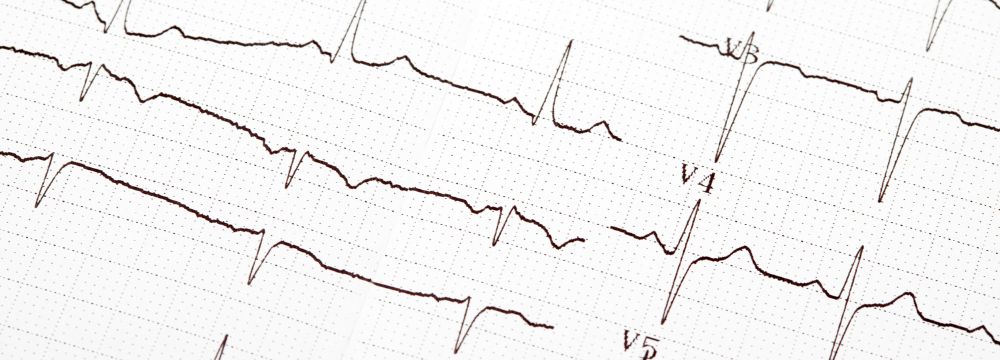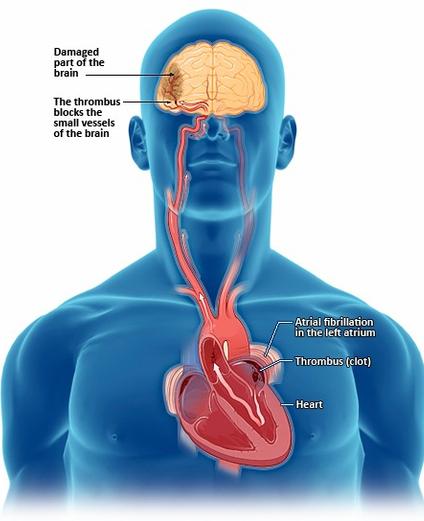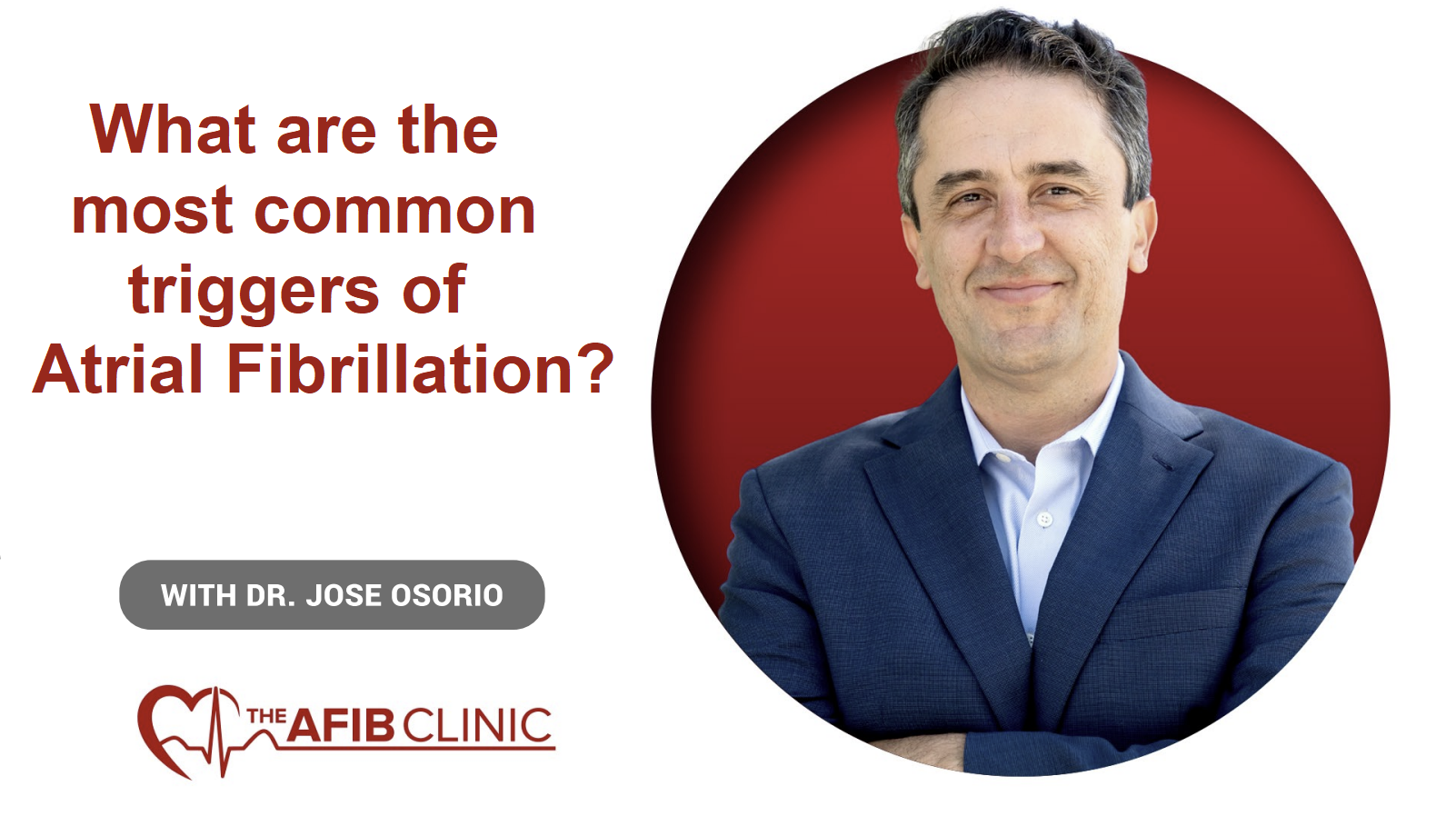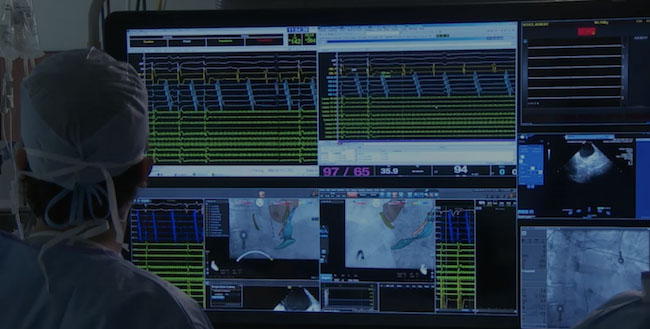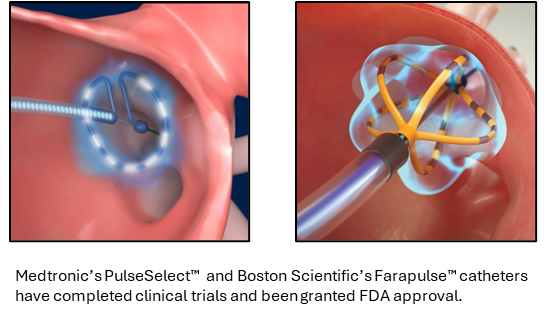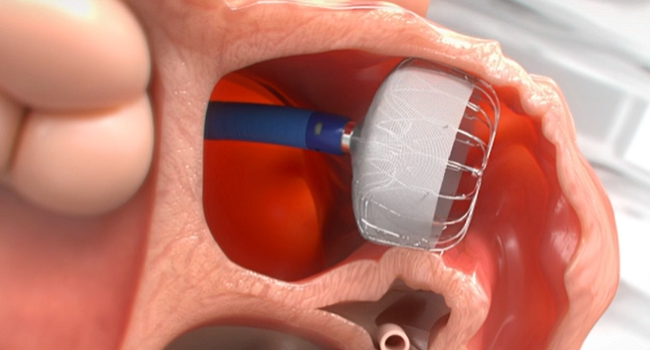Atrial Fibrillation
How can a doctor tell if you have AFib?
Atrial fibrillation is diagnosed using an ECG or electrocardiogram. You have to be in AFib when the ECG is performed to detect the condition. Other methods can be used today depending on your type and frequency of AFib.
In the early stages of Atrial Fibrillation (Afib), the condition is paroxysmal for most patients. That means that you’re in and out of Afib and have episodes that will last a few minutes to hours and may not recur for months. This pattern may delay the diagnosis because when you see your primary care physician or cardiologist, your heart may be in normal rhythm, and an ECG performed at that time would be normal. For many patients, this process continues for months or even years until, eventually, the condition becomes more frequent and an episode of AFib is documented.
If a patient has persistent AFib, they are continuously out of rhythm. That means that any time they have an ECG performed, it will document the arrhythmia. It is, therefore, easier to diagnose afib in this group of patients.
How do we diagnose Afib for patients with Paroxysmal type?
To diagnose Afib, we need to perform an ECG or a monitor while your heart is out of rhythm. This can be done in a few ways:
ECG:
performed at the doctor’s office while you are in Afib
Holter monitors:
the technology used for holter monitors has improved a lot. We can send patients home today with a small “patch monitor” that is taped to the upper chest area and will record your heart beats continuously for 7 to 14 days. These devices will monitor your heart night and day and if you have an episode, even if short and asymptomatic, will document it.
Implantable Loop Recorder:
Implantable loop recorders (such as the Linq device) are used to monitor and diagnose afib and other arrhythmias. They continuously record and the battery may last several years[/caption]
Some patients have episodes of Afib that are sporadic but may be very symptomatic and even cause strokes. Diagnosis can be a challenge. However, if we have a high index of suspicion that a patient may have Afib, we may recommend an implantable loop recorder (ILR). These are very small devices implanted under your skin. Their battery lasts years and they will monitor your heart and if arrhythmias are detected, alert your physician.
Pacemaker and Defibrillators:
For patients with implantable cardiac devices, diagnosis of Afib can also be made via interrogation of the device. These devices have a memory and will record any events that may be arrhythmias.
Wearables like the Apple Watch
Several smartwatches and other wearable devices can be used today to monitor your heart for irregularities. If they are detected, you may use some devices to perform a single lead ECG
Wearables have increased the number of patients diagnosed with Afib. Patients are also being diagnosed earlier in the disease process. Not every patient that has AFib diagnosed with a wearable may need to be treated immediately, and some can be monitored only until they have more spells or develop symptoms.
Atrial Fibrillation Treatment
Once diagnosed with AFib, patients need to be evaluated to understand what is the best strategy to reduce the stroke risk, improve the quality of life (treat the symptoms), and slow the disease progression.
Lifestyle interventions are very important to reduce the chances that a patient will progress to overt Afib with frequent and symptomatic spells. Weight loss, exercise, reducing alcohol intake, quitting tobacco use, and screening for sleep apnea are all important steps every patient should take to improve their overall health and reduce the chances of progression of Afib.
Atrial Fibrillation (Afib) is a condition that can impact your quality of life and cause strokes. Afib treatment should be individualized to meet each patient’s needs.
Dr Jose Osorio
Miami, FL
Read more about AFib:

